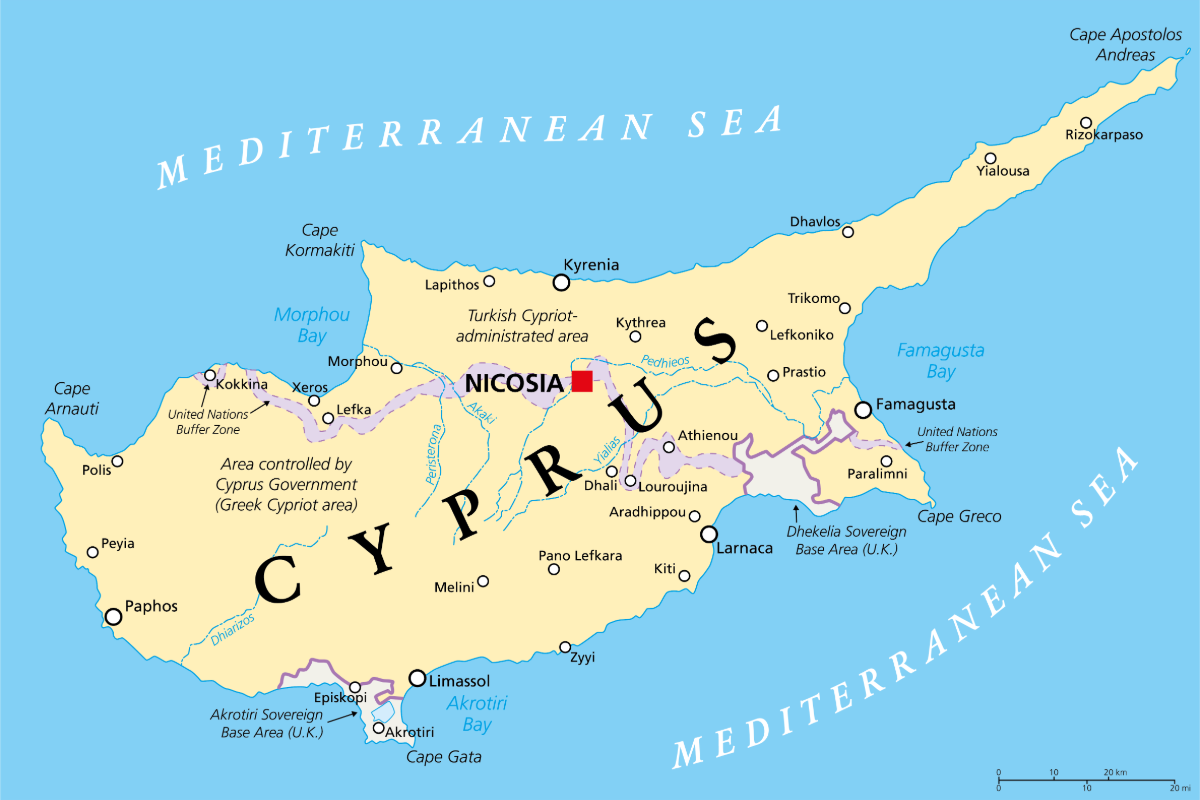
In the context of nation-state building, the redefinition of national borders after World War I and the atrocities of World War II, numerous measures were taken in Europe with the objective of creating homogeneous populations. Today we would speak of “ethnic cleansing”. Ethnic cleansing as an instrument of nation-state building was employed in Europe in connection with the events on the Balkans and the Caucasus again at the beginning of the 1990s. The term “ethnic cleansing” relates not only to the deportation and forced relocation but also to the murder of members of linguistic, religious or ethnic minorities (→ What is a “Minority”?). The practice of ethnic homogenisation of a territory through forced displacement and deportation often verges on genocide where the murder of the group is intended in whole or in part. The massacre of Srebrenica during the war in Bosnia and Herzegovina, for example, which was the subject of a case at the International Criminal Tribunal for the former Yugoslavia against Radovan Karadžic, the former President of Republika Srpska, has been classified as genocide. In addition to genocide and relocation by forced displacement and deportation in the course or as a result of acts of war, there have also been repeated cases of population exchange on the basis of treaties established between two countries. Besides the many cases of denaturalisation and expropriation without any compensation, victims were often denied all future rights of return or restitution.
Genocide against the Armenians during World War I

Photo: Unsplash/Mike Labrum
At the beginning of World War I, the Christian minority of the Armenians in Anatolia numbered between 1.5 and 2 million and accounted for about ten percent of the population. The Ottoman Empire, which also fought with Germany and Austria-Hungary against Russia, accused the Armenians of collaboration with the latter. Volunteer Armenian units did in fact fight alongside the Russians in the hope of achieving independence for Armenia. The Turkish government responded by holding the Armenian civil population collectively responsible and enacted its Law of Deportation in 1915. The army was ordered to expel the Armenians and to nip all resistance in the bud. The massacre of the Armenians started in the central collection camps. These massacres and the death marches across the mountains and into the territory of today’s Syria – with no resettlement measures provided for – led to the death of more than a million Armenians. After World War I, in response to pressure exerted by the Allies, the main perpetrators in the genocide were tried before a military court and seventeen death sentences were passed, three of which were carried out. In 1923, however, the remaining convicted Turks were released in a general amnesty.
Following the genocide, only about 100,000 Armenians were left in Turkey at the beginning of the 1920s. Most of the survivors fled to Russia and above all via the Middle East to South America, the USA and Australia. In addition to the Christian religion and their language, the genocide is part of the identity of the Armenians now living in over a hundred different countries. In spite of the historic and identity-defining importance of the events, decades of effort by the Armenian diaspora to have the genocide officially recognised have largely failed. Since 1965 only 21 countries, including Greece, Italy, Canada, Russia, Switzerland and Cyprus, have officially classified the deportation and massacre of the Armenians between 1915 and 1917 as genocide within the terms of the 1948 Genocide Convention. The United Kingdom has condemned the crimes but does not consider the criteria to have been met for classification as genocide in accordance with the UN convention. In 2005 Germany called upon Turkey to acknowledge its historical responsibility for the massacre of the Armenians. In France, where half a million Armenians live, a bill was approved by the First Chamber in 2006 to make denial of the Armenian genocide a criminal offence punishable by up to a year’s imprisonment and a fine of € 45,000, but the bill then failed to pass the Senate. On the basis of a new EU legal instrument, “public condoning, denying or grossly trivialising crimes of genocide” was made punishable under national criminal law as of 28 November 2010 (→ Xenophobia). At the political level, the European Parliament decided in 1987 and again in 2001 that recognition of the Armenian genocide should be made a precondition of Turkish accession to the EU (→ Organisations).
It was with mixed feelings that the Armenian diaspora responded to the Turkish-Armenian Protocol, which was signed in October 2009 but still has to be approved by the two national parliaments in Ankara and Yerevan. In 1993 the countries broke off diplomatic relations because of the Nagorno-Karabakh conflict (territorial dispute between Armenia and Azerbaijan) and Turkey’s refusal to recognise the massacre of the Armenians during World War I. The Protocol provides for the appointment of a commission of historians, who are to be given access to the archives. The majority of the Armenian diaspora, however, seems to reject the proposal as a mockery of the historical facts and a delaying tactic on the part of Turkey. Moreover, the focus of the Protocol is on improvements to Turkish-Armenian relations and cooperation in the fields of energy, transport, communications, tourism and education, which many representatives of the Armenian diaspora see as a betrayal on the part of the Armenian government in the interest of purely economic advantage.
Relocation on the basis of bilateral treaties: Examples from Greece and Turkey to Austria
Ethnic cleansing has often been based on relocation treaties signed at the end of a war or military conflict in order to consolidate redrawn borders. The objective of such measures is normally ethnic homogenisation of the territory of the state so as to prevent potential tensions arising with neighbouring states. In the interwar period, this mode of returning a minority to its parent country was seen as an act of self-determination (→ Autonomies); integration of the minority in the parent country meant that its members could exercise all their rights as part of the majority. Such relocation treaties are only legal, however, where the people concerned are able to take the decision of their own free will.
The Treaty of Lausanne concluded between the Greeks and the Turks in 1923 provided for a major compulsory population exchange involving 1.250,000 Greeks in Turkey and 400,000 Turks in Greece. This mutual relocation was performed under the auspices of the League of Nations and was considered a suitable and humane solution for minority problems up to the end of the 1930s. As a matter of principle, the right to property must be respected with any form of relocation, for example through the allocation of equivalent property in the new area of settlement or at least adequate compensation. In the Greco-Turkish relocation agreement, however, all claims were settled in the form of a lump sum.
The situation was similar in the case of the 1919 Greco-Bulgarian Convention respecting Reciprocal Emigration, in which the population exchange was theoretically voluntary. In reality, however, the affected population groups were under strong pressure to opt for their parent country. In the course of this relocation about 100,000 Bulgarians and 35,000 Greeks had to leave their homes. The compensation due to be paid in the parent country remained an empty promise in most cases. For those individuals who rejected relocation, protocols were signed by Greece and Bulgaria relating to protection for their respective minorities, but the protocols never entered into force and the remaining minorities were ultimately deprived of all rights.
South Tyrol, which was officially annexed by Italy in 1920 following the collapse of the Austro-Hungarian Empire, had an almost one hundred percent German-speaking and Ladin population at the time. When the Fascists seized power in Italy, Italianisation measures were introduced including a ban on the use of the German language in schools and public life and the Italianisation of German surnames and place names. Mussolini’s policy of mass resettlement for Italians in the new industrial areas of South Tyrol (the so-called Death March for the South Tyroleans) was designed to create a new Italian majority there. Finally, in 1939, Hitler and Mussolini concluded the Option Agreement, under which South Tyroleans had to choose between emigrating from South Tyrol and receiving German citizenship in exchange or retaining Italian citizenship and completely relinquishing their German identity. In addition, the message in the official propaganda was that the “stay-at-homes” would be resettled in the south of Italy while the “optants” would be assigned a suitable area for collective settlement in the German Reich. Over 200,000 of the German-speaking and Ladin population opted to leave (about 86%), but the process of relocation was interrupted by the events of World War II and only one third of the optants actually left. A quarter of the approximately 75,000 emigrants returned to South Tyrol after the war and regained their right to nationality through the 1948 Optants Decree. After World War II, with help from the international community, Austria and Italy succeeded in negotiating a minority protection regime based on equal rights for all three of South Tyrol’s linguistic groups and a peaceful settlement of the ethnic conflict (→ Autonomies).
Ethnic cleansing on Cyprus and its consequences

Photo: Adobe Stock/Peter Hermes Furian
In 1960 Cyprus gained independence from the United Kingdom. Only three years later, in 1963, conflict broke out between the Greek and Turkish ethnic groups. The Greek Cypriots were unhappy because they felt the quotas reserved for the Turks in the public administration system were excessive (→ Quota and Proportional Systems). The situation escalated with a planned change to the constitution that would have benefited the Greek population. Fighting broke out and, with Nicosia almost in a state of civil war, the UN sent a peacekeeping force before the conflict could spread to Greece and Turkey.
In 1974 Greek soldiers stationed on the island overthrew the democratically elected President of Cyprus. The goal of the coup d’état, which was steered by Athens, was the forcible annexation of Cyprus. Turkey thereupon intervened and occupied more than a third of the northern part of the island. The conflict led to the forced displacement and relocation of some 200,000 Cypriots. 160,000 Greek Cypriots fled from the north to the south, and 40,000 Turkish Cypriots moved from the south to the north. While the government in the Greek area claimed the authority to represent the whole island, the Turks proclaimed the Turkish Republic of Northern Cyprus in 1983, which has only been recognised by Turkey. The resettlement of mainland Turks and the presence of Turkish soldiers in the north widened the rift between north and south still further. Until its accession to the EU in 2004, the ethnically cleansed island was divided into two hermetically sealed off areas separated by the 180 km long Green-Line, i.e. a buffer zone under the control of the UN.
In 1999 the UN renewed its diplomatic efforts to find a solution for the reunification of Cyprus in time for the island republic’s accession to the EU. The Annan Plan presented in November 2002 (UN proposal named after the then Secretary General Kofi Annan) provided for a confederation on the Swiss model with a Turkish and a Greek state, each enjoying a considerable degree of autonomy (→ Grisons). Under the plan, the Turkish area would have had to be reduced from 37 percent to 29 percent of the total, and 50,000 Turks would have had to be resettled, while over 100,000 Greeks would have been able to return, on a step-by-step basis, to the villages they had lived in prior to the division of the island.
The majority of the population in the Turkish part of Cyprus and also the Turkish government agreed to the reunification program, but in a referendum held just before Cyprus’ accession to the EU the Greeks said “no”, and Cyprus joined the EU as a divided country in May 2004. Since then the EU has been living with the fiction of a unified Cypriot island state, although it is clear to everyone that one third of its territory is not under the control of this EU Member State. International recognition is still lacking for the Turkish part of Cyprus, where EU law cannot be applied. In the spring of 2008 the two sides agreed to resume negotiations on reunification of the two parts of the island, but so far – in spite of pressures brought to bear by the EU and the international community – little concrete progress has been made.
The Beneš decrees and AVNOJ resolutions and their consequences

Photo: Adobe Stock/BillionPhotos.com
The Beneš Decrees – named after the then Czechoslovak President Edvard Beneš – were drafted by the Czechoslovak government in exile from 1940 to 1945 and adopted by the provisional national assembly in March 1946. The resulting mass deportation of the German-speaking population from Sudetenland mainly took place in 1945 – 1947. Some 2.5 million Germans and members of the Hungarian minority had their property confiscated and were expelled. Germans and Hungarians, who were collectively accused of collaboration with the Nazi regime in the decrees, lost Czechoslovak citizenship and all property rights. The Beneš decrees are still in force today and remain a bone of contention in politics and the media comment between Germany and Austria and their Sudeten Germans and their associations on the one hand and the Czech Republic and Slovakia on the other. In 2009 the Czech President Vaclav Klaus spent a number of months blocking the Lisbon Treaty, which for him was the grave of Czech sovereignty. At the European level he defended his resistance to the treaty with the argument that the EU Charter of Fundamental Rights would cause the Czech courts to be swamped with claims for compensation for the consequences of the Beneš decrees. In fact the entry into force of the Charter of Fundamental Rights did not change the prior legal situation and most certainly cannot lead to the readmission of statute-barred claims. It required a ruling by the Czech Constitutional Court to the effect that the Lisbon Treaty was not in breach of the country’s constitution to finally persuade President Klaus to sign the treaty on 3 November 2009 (→ Lisbon Treaty) – but only after having first negotiated a cosmetic Beneš clause.
In 1943, the Anti-Fascist Council of the People’s Liberation of Yugoslavia, also known by the Yugoslav abbreviation AVNOJ, adopted the following resolution: “The entire property of the German Reich and its citizens … and the entire property of persons belonging to the German people … will become state property.” This was confirmed by Tito in 1944 and incorporated in the law of the Republic of Yugoslavia in 1945. Since relocation of ethnic Germans had already been the policy of the German Reich from 1943–1945, the AVNOJ resolutions primarily affected those Danube Swabians still living in Vojvodina at the end of the war following terrible persecution, and a few thousand remaining Lower Styrians and Gottscheer. On the basis of the 1955 State Treaty concluded between Austria and the Allies, Austrian property on Yugoslav territory was assigned to Yugoslavia in lieu of reparations. The confiscated property thus passed into Yugoslavian state ownership, and no compensation has been paid to this date, especially since the Republic of Slovenia, in accordance with the provisions of the 1991 Denationalisation Act, excludes the restitution of property nationalised by way of indemnification between 1945 and 1963.
Two take aways:
- Relocation and ethnic cleansing were often employed in order to create a homogeneous population in support of nation-state building and to avoid collective outbreaks of violence or even genocide. Population exchange treaties with no right of choice for the people affected are nevertheless in violation of international law as they infringe elementary human rights and the right of (internal) self-determination. Even in cases where an element of choice was formally conceded, however, the individual often had little scope to escape the collective decision of the group, so powerful were the propaganda and coercion on both sides. Examples from the recent past like the war on the Balkans show that with regard to mass murder or genocide the distinction is often blurred.
- Even when not clearly in violation of international law, ethnic cleansing does not necessarily bring pacification to a territory, as the recent examples of Bosnia-Herzegovina and Cyprus show. In addition, agreed return settlement measures, restitution or compensation often never materialise or are explicitly excluded unilaterally.
